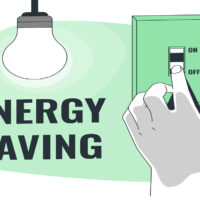To avoid lightning in an open field, seek shelter immediately and avoid tall objects. Crouch low if no shelter is available.
Lightning poses a significant danger during storms, especially in open areas. Many people underestimate the risks associated with being caught in an open field during a thunderstorm. Lightning strikes can cause severe injuries or even death. Knowing how to protect yourself in such situations is crucial for your safety.
Quick action and awareness can greatly reduce your chances of being struck. Always stay informed about weather conditions and plan your activities accordingly. Understanding these safety measures can save lives and prevent accidents. Stay safe and prioritize your well-being during adverse weather conditions.
Recognizing Storm Signs
Being aware of storm signs can save lives. Recognizing these signs early can help avoid lightning strikes. Look for changes in the sky and listen for sounds. This can make a big difference.
Cloud Patterns
Watch the clouds for signs of a storm. Dark, towering clouds are a warning. These clouds often look like mountains. They grow quickly and turn dark gray or black. This type of cloud is called a cumulonimbus cloud.
Sometimes, you might see a shelf cloud. This cloud looks like a long, dark shelf in the sky. It often appears before a storm. Pay attention to these cloud patterns. They can tell you if a storm is coming.
Thunder Sounds
Hearing thunder is another sign a storm is near. If you hear thunder, lightning is not far. Remember the saying, “When thunder roars, go indoors.” This means you should seek shelter right away.
Count the seconds between a flash of lightning and the sound of thunder. For every five seconds, the storm is one mile away. If the time between lightning and thunder gets shorter, the storm is moving closer.

Credit: www.amper.com.tr
Planning Ahead
Planning ahead can save your life during a lightning storm. Being prepared and informed helps you stay safe. Here are some tips to consider.
Weather Forecasts
Always check the weather forecast before heading out. A reliable weather app can be a lifesaver. Apps like WeatherBug or AccuWeather provide real-time updates.
Look for signs of storms in the forecast. If there’s a high chance of lightning, it’s best to stay indoors.
Consider using a weather radio. This will give you updates even in remote areas.
Emergency Kits
Having an emergency kit can be crucial. Here’s what to include:
- First-aid kit
- Flashlight with extra batteries
- Portable phone charger
- Blanket or emergency thermal blanket
- Non-perishable food and water
Store your kit in a waterproof container. Keep it in an easy-to-reach place.
Being prepared with weather forecasts and emergency kits can make a big difference. Plan ahead and stay safe from lightning.
Safe Shelter Options
Being caught in an open field during a thunderstorm can be terrifying. Knowing safe shelter options can save your life. Here are the best places to stay safe from lightning.
Buildings
Buildings offer the best protection from lightning. Always seek a substantial shelter. Look for enclosed structures with plumbing and electrical wiring. These features help ground the building. Avoid small sheds, tents, or isolated trees. These do not provide adequate protection.
Once inside, stay away from windows and doors. Avoid using electrical appliances and plumbing. This includes avoiding showers, sinks, and electronic devices. These can conduct electricity and pose a risk.
Vehicles
If a building is not available, seek shelter in a vehicle. Cars with metal roofs and sides offer protection. They act as a Faraday cage, guiding lightning around you. Do not touch metal parts inside the car during a storm.
Keep windows closed and avoid leaning on doors. Stay inside the vehicle until the storm passes. This can significantly reduce the risk of lightning strikes.
| Safe Shelter Options | Key Points |
|---|---|
| Buildings |
|
| Vehicles |
|
Best Practices In Open Fields
Lightning can strike without warning, making open fields dangerous during storms. To stay safe, follow these best practices in open fields. Learn how to protect yourself by using the right techniques and avoiding common dangers.
Crouching Technique
If caught in an open field during a storm, use the crouching technique. This technique minimizes your contact with the ground. It reduces your risk of being struck by lightning.
- Keep your feet close together.
- Place your hands on your knees.
- Bend forward to make yourself smaller.
Do not lie flat on the ground. This increases your contact area, making you more vulnerable. Crouching keeps you lower and safer.
Avoiding Trees
Standing near trees during a storm is unsafe. Trees can attract lightning. Follow these tips to stay safe:
- Stay away from tall, isolated trees.
- Find lower ground, if possible.
- Seek shelter in a low-lying area with no trees.
If no shelter is available, avoid tree clusters. Spread out if you are with others. This reduces the chance of multiple injuries from a single strike.
Always remember, the key to avoiding lightning in open fields is to stay low and avoid tall objects.
What To Avoid
When caught in an open field during a lightning storm, knowing what to avoid can save your life. Lightning is unpredictable and deadly, so it’s crucial to minimize your risk by steering clear of specific hazards. This section will guide you on what to avoid to stay safe.
Metal Objects
Metal objects are excellent conductors of electricity. Holding or being near metal can attract lightning. If you have any metal items with you, such as tools, umbrellas, or jewelry, distance yourself from them immediately.
- Tools: Leave any metal tools behind.
- Umbrellas: Put down umbrellas with metal components.
- Jewelry: Remove metallic jewelry if possible.
Water Bodies
Water is another excellent conductor of electricity. Being near water bodies during a lightning storm increases your risk. Avoid lakes, ponds, and even puddles.
| Water Body | Why to Avoid |
|---|---|
| Lakes | Can conduct lightning strikes over large areas. |
| Ponds | Also conduct electricity and are often found in open areas. |
| Puddles | Can still conduct electricity, even if small. |
Always move to higher ground away from any water body. Stay dry to reduce the risk of lightning strikes.
Handling Group Safety
Being caught in an open field during a thunderstorm can be dangerous. Ensuring group safety becomes a priority. Follow these key steps to keep everyone safe from lightning.
Spreading Out
When in a group, it’s crucial to spread out. Standing close increases the risk of multiple injuries. Keep a distance of at least 20 feet between each person.
This reduces the chance of lightning striking multiple people at once. If lightning strikes, it will affect only one person. This way, others can help immediately.
Communication Plans
Establishing a communication plan is vital. Ensure everyone knows the safety protocols. Use simple and clear signals to communicate. Whistles or hand signals work best in loud conditions.
Assign a leader to coordinate movements and decisions. The leader should remain calm and collected. Everyone should know who the leader is.
Use a table to outline the basic communication plan:
| Signal | Action |
|---|---|
| One Whistle Blow | Stop and listen |
| Two Whistle Blows | Spread out |
| Three Whistle Blows | Move to a safer location |
Having a clear plan helps reduce panic. This ensures everyone acts quickly and safely. Remember, communication can save lives during a storm.
Post-storm Actions
After a storm, it’s crucial to take immediate actions to ensure safety. Here are some essential steps to follow post-storm.
Checking For Injuries
First, assess everyone for injuries. Check if anyone needs medical help. Lightning injuries might not be visible at first glance.
Use the following checklist to ensure thorough checking:
- Look for burns or wounds.
- Check for breathing and pulse.
- Ask if they feel tingling or numbness.
If you find injuries, call emergency services immediately. Keep the person still until help arrives.
Reporting Incidents
After ensuring everyone’s safety, report the incident. Inform local authorities about the lightning strike. This helps them respond effectively.
Here’s a quick guide on how to report:
- Call the local emergency number.
- Provide your exact location.
- Describe the incident briefly.
- Mention any injuries or damages observed.
Reporting helps prevent future incidents and enhances community safety.
Following these steps ensures safety after a storm. Stay calm, act quickly, and prioritize health and safety.

Credit: mobile.twitter.com
Essential Gear
When caught in an open field during a thunderstorm, having the right gear is crucial. This gear can save your life. Here are some essential items that can protect you from lightning.
Lightning Detectors
Lightning detectors are small devices that can detect nearby lightning strikes. These devices can give you advance warning. This allows you to find shelter quickly. Some detectors are handheld, while others can be worn like a watch. Portable lightning detectors are perfect for outdoor enthusiasts. They are lightweight and easy to carry.
| Type | Features |
|---|---|
| Handheld | Small, easy to use, battery-operated |
| Wearable | Compact, worn like a watch, real-time alerts |
Protective Clothing
Wearing protective clothing can significantly reduce the risk of injury from lightning. Rubber-soled shoes are a must. They provide insulation and reduce the chance of a lightning strike reaching your body. Avoid metal accessories. Metal can attract lightning.
- Rubber-soled shoes – Insulate your body from the ground
- Rainproof jackets – Keep you dry and reduce the risk of hypothermia
- Non-metal accessories – Avoid wearing items that can conduct electricity
Having the right gear can make all the difference. Stay safe and be prepared.

Credit: www.wikihow.com
Frequently Asked Questions
How Can I Stay Safe From Lightning In An Open Field?
To stay safe, avoid high ground and isolated trees. Crouch down with feet together if no shelter is available. Stay away from metal objects and water.
What Should I Avoid During A Lightning Storm?
Avoid tall objects, metal structures, and open fields. Do not lie flat on the ground. Stay away from water bodies and isolated trees.
Is It Safe To Use Electronics During A Storm?
No, it’s not safe. Avoid using electronics like phones and laptops. Lightning can travel through electrical systems and damage devices.
What Is The Best Position To Take During Lightning?
The best position is to crouch down with feet together. Keep your head low and minimize contact with the ground to reduce risk.
Conclusion
Staying safe from lightning in open fields is crucial. Follow the tips to reduce your risk. Seek shelter immediately when storms approach. Avoid tall objects and open areas. Remember, safety first. Prepare and stay informed to protect yourself and others.
These simple steps can save lives and keep you safe.




